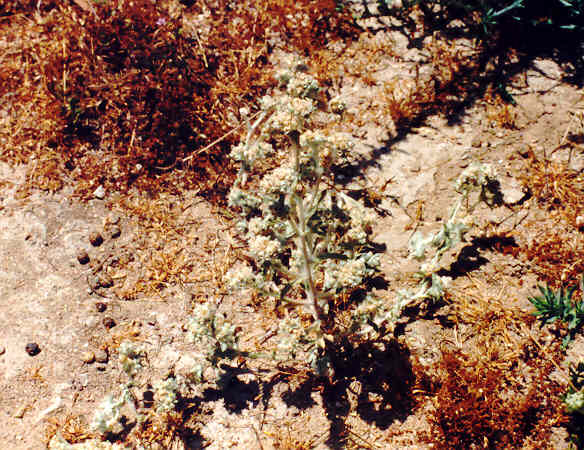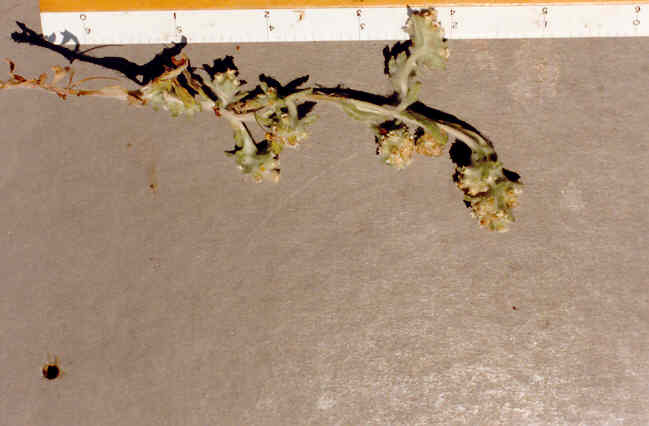
 |
Gnaphalium palustre Nutt.Asteraceae (Sunflower Family)NativeLowland Cudweed |
May Photo
Plant Characteristics: Annual, commonly branched at base, 0.5-2 (-3) dm. high, floccose-tomentose, especially upwards and on the stems; lvs. spatulate, or oblanceolate to obovate or oblong, 0.5-4.5 cm. long, 3-8. mm. wide, usually obtuse and apiculate, narrowed to the sessile, not decurrent, often petioliform base, the uppermost oblong or lanceolate and subtending the glomerules of leafy-bracted heads; heads small, about 120-30 flowered, 3 mm. high, glomerate at tips of stem and branches and often in the axils, usually surpassed by the subtending leaves; invol. campanulate, woolly to the middle, the phyllaries linear, obtuse, greenish-centered below, with shorter or longer, exserted, scarious and shining, white tips, these often brownish-tinged below apex or essentially throughout in less densely floccose forms, 3-3.5 mm. high; pistillate fls. 110-20, hermaphrodite 6-8; corollas whitish; achenes smooth or papillose, the pappus-bristles distinct, falling separately.
Habitat: Frequent on
damp flats and banks, from sea-level to 9500 ft.; many Plant Communities;
cismontane and montane Calif.; San Clemente, Santa Catalina, and Santa Cruz
Ids.; to B.C., Rocky Mts. May-Oct.
Name: Greek, gnaphalon, a lock of wool, these plants floccose-woolly.
(Munz, Flora So. Calif. 169).
Latin, palustre, marshy.
(Jaeger 181).
General: Rare in the
study area, having been found only on the easterly side of the Delhi ditch.
(my comment). Gnaphalium species have been used as an astringent, expectorant,
diaphoretic, aromatic and vulnerary. Pioneers
used the plants for stuffing pillows. (Meyer 70).
Indians used leaves for catarrhal infections and decoction of the leaves
for intestinal and pulmonary catarrah (inflammation of membranes); also for
bruises. The
bruised plant assists in healing wounds, and an infusion (steeping leaves in
cold water) is used for increasing perspiration.
(Sweet 62).
See other Gnaphalium species for more information on the genus and
individual species. (my comments).
Text Ref: Abrams, Vol.
IV 472; Munz, Flora So. Calif. 171;
Roberts 11.
Photo Ref: May-June 93
# 11,13.
Identity: by R. De Ruff, confirmed by John Johnson.
Computer Ref: Plant Data 454.
Have plant specimen.
Last edit 10/20/02.
 |
May Photo